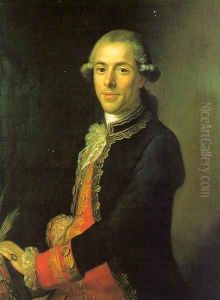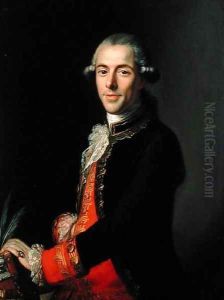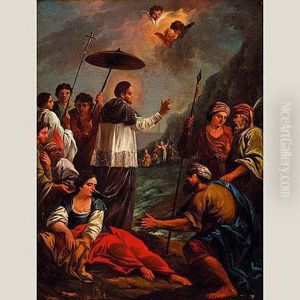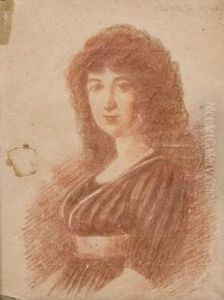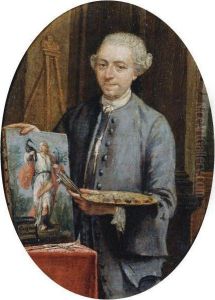Joaquin Inza Paintings
Joaquín Inza was a Spanish painter born in 1746 in the town of Alfaro, in the province of La Rioja. Not much is known about his early life, but he is recognized for his contributions to religious art in Spain during the 18th century. Inza's work was primarily in the Baroque style, which was prevalent during his time, although his later works showed a transition to the nascent Neoclassical style.
After his formative years, Inza moved to Zaragoza, where he became a disciple of Francisco Bayeu, a renowned Spanish artist of the period. Under Bayeu's tutelage, Inza honed his skills, particularly in religious painting, which was highly demanded by the Church and religious institutions. Bayeu's influence is evident in Inza's use of dramatic lighting and realistic detail, typical features of the Baroque style.
In 1772, Inza was commissioned to work on the frescoes of El Pilar Basilica in Zaragoza, one of the most significant projects of his career. His work in the Basilica brought him acclaim and further commissions. Throughout his career, Inza painted numerous religious works for churches and cathedrals, including altarpieces, frescoes, and canvases depicting various saints and biblical scenes.
Inza's body of work reflects the religious and artistic sensibilities of his era. His paintings are characterized by dramatic expressions, vivid colors, and dynamic compositions. Although not as widely known as some of his contemporaries, Inza contributed to the rich tapestry of Spanish art history.
Joaquín Inza died in 1820. While he may not have achieved the same level of fame as other Spanish artists from the Baroque period, his works continue to be appreciated for their craftsmanship and devotion to religious themes. His paintings can be found in various churches and collections in Spain, where they serve as a testament to his artistic legacy.
